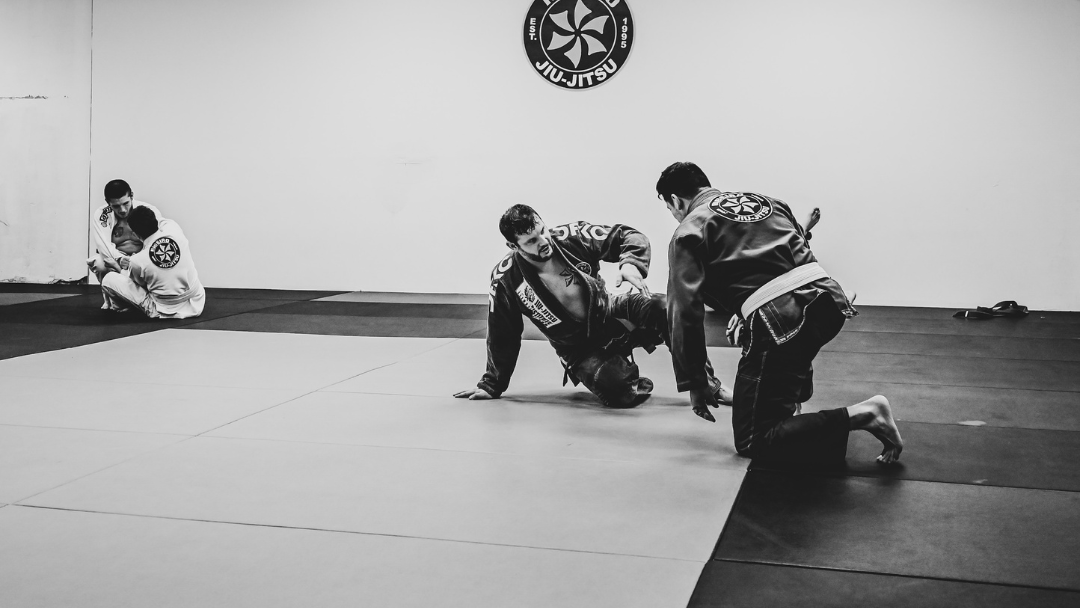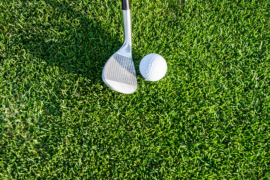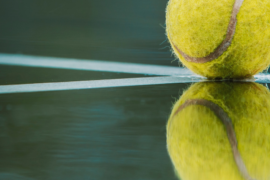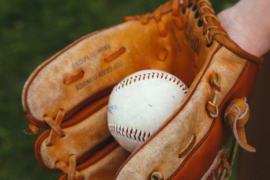And if California slides into the ocean
Like the mystics and statistics say it will
I predict this motel will be standing
Until I pay my bill.
—Warren Zevon
WHEN I WAS THIRTY-FIVE YEARS OLD, I tore my Anterior Cruciate Ligament (ACL) in a Jiu Jitsu tournament. The injury was not the result of a submission but rather my unfortunate (and incorrect) knee position as I got up from a scramble on the ground. My opponent attempted to take my back, and in the process my knee was bent “about ninety degrees in the wrong direction,” as Johnny Utah says in the much-underrated film, Point Break. Recall, in particular, a conversation between Johnny and Bodhi about the group of rabble-rousing, spun-out LA beachcombers Utah believes are the bank-robbing surfers. The Boddhisatva, bronze-chested and unmarked from their previous brawl with the pack of rabid tweakers, says to Utah: “They only live to get radical.” There should be, that is, parameters and limits to the permission of excessive aberrant physical behavior. Those who only live to get radical, Point Break ultimately suggests, end up dead.
An ACL-tear (or any debilitating injury) is, of course, much different from death. But the experience brings one a little closer to it. Acute trauma to the knee brings nauseating pain and immobility. If one is not vigilant, the blow can send him into spirals of shame and regret, loss of purpose, and suicidal ideation. If one puts stock in his body, if that is where he “taps meaning[1],” then the question of why he should go on living becomes more immediate when his body is broken.
The successful rehabilitation and recovery from such an injury is now common among amateur and professional athletes around the world. Statistics, however, do not make an ACL-tear less painful to the individual athlete herself. The rehabilitation is anywhere from six months to a year. It is grueling, frustrating, and incremental in progress. Perhaps more consequentially, a demonic psychological torment accompanies the act of sitting on the sidelines, falling out of fighting shape, and making contact with the sport only through teammates’ anecdotes and YouTube videos.
If one’s perception of the world is primarily physical, an ACL-tear is devastating, but the rewards of pushing through rehabilitation drills are not only character-building but can at times feel equivalent to a victory in a tournament or match. This journey is not sexy, nor is it fun. It is in the Freudian sense to come to terms with, or at least encounter, life at its essence: “too difficult[2],” and “full of unredeemable suffering[3].” Endurance and resilience become necessary to receive doctor’s clearance to train, compete, and ultimately retain one’s dignity.
When I entered physical therapy, my goal was to rehab my knee in the same amount of time as it had taken Adrian Peterson: six months. My DOP, a stern but humorous man named Ted, looked at me suspiciously and said, “You are no Adrian Peterson.”
My athletic training is in Brazilian Jiu Jitsu, or what is often called “submission grappling.” This discipline includes wrestling, take-downs, and choke- or joint-lock submissions. In order to prepare seriously for an amateur tournament, one must train four to five days per week, one to two sessions per day. (Jiu Jitsu training sessions typically run ninety minutes each.) In competition, one must be prepared to grapple hard for an uncertain number of rounds, the lengths of which are determined by the grapplers’ experience. Fighters are put into brackets according to weight class, and they must push through anywhere from two to five matches (sometimes more if the bracket is deep) to win gold.
If you have never grappled and are interested in experiencing its physical taxation, I suggest finding a friend, a soft surface, and seeing which one of you can stay on top of the other for six minutes. Your level of exhaustion after thirty seconds will be infinitesimal compared to that of a grappler deep in competition. As my good friend and training partner warns: “Don’t blow your load on the first match.” You must use energy efficiently: attack when opportunities arise, stick to your game, and keep composure amidst a gymnasium full of spectators and coaches hollering commands at you and your opponent. In these conditions, to dominate and submit an opponent within six minutes (the length of rounds, in my case) requires immense discipline of body, mind, and spirit.
One of the ethics to which many fighters adhere is a deep sense of stoicism. They understand how to hide pain and continue fighting when injured—if one breaks his hand, for example, in an MMA fight, or tears a ligament in a Jiu Jitsu match. The reasoning behind this ethic is sound: if one is attacked or injured on the streets, he or she will still need to fight, for there will be no referee to pull the attacker off. (unless a Good Samaritan steps in) One ultimately trains a martial art, as my good friend and training partner also affirms, “to be a better person.” Part of being better includes the confidence and ability to protect oneself at a primal level. That means training for real life.
When I felt my knee “pop,” I immediately knew I was hurt, but I had enough adrenaline pumping to get back up. The match ended a few minutes later, on the ground, where I was submitted by armbar. On the streets, this means my arm would have been broken, or in the worst case, its ligaments torn apart. But as my good friend and training partner once again reminds us: “The more time you can buy yourself to get away, the better your chances of survival.” In other words, one can still fight with a broken arm and busted knee.
I lost the match and was so demoralized that I initially refused to step on the podium to accept bronze, but my competitors were good-natured and insisted, helping me up on one leg to accept the medal. That match was a victory on account of the fact that I finished it. An injury did not prevent me from continuing to fight, even if it was ultimately a losing struggle. Many outside the fight community say I am a fool for continuing the match, that I should have called it, as I probably did more damage than the original tear. I disagree. Where matters of dignity and discipline are concerned, one does not quit. You fight until you prevail or are vanquished. This is the ethos not only of the fighter but also the football player or swimmer or skateboarder in competition-mode: the athlete is always all in, in the sense of Mark Edmundson’s description of the classical Achillean ideal: thymos. This is the realm of glory, and its unremitting pursuit, at all costs.
Ultimately, of course, the athlete wants to achieve victory, to gain first-place. But my injury and rehabilitation taught me that recovery can be (almost) as rewarding as a tournament win. I did my rehab in six months, indeed. My Jiu Jitsu coach told me to go back to the hospital and tell Ted, “Who’s no Adrian Peterson now?” But like my coach, Ted is a highly intelligent man: one of the best ways to motivate a serious athlete is to tell him that he cannot do something.
After I had made significant progress, about three months into the rehabilitation (no more Percodan or Norco to alleviate the pain during PT sessions) Ted allowed me to begin some of the drills and exercises I was accustomed to at the gym: shadow-wrestling, shots, down-blocks, sprawls. I tore through the exercises with the same work ethic as I did my mat drills and shark-tank rounds at the gym in preparation for the tournament. I was all in. When it came time to take my measurements for distance and balance on the one-legged triple jump for my surgery-knee, I hit it on my second attempt and was cleared to return to the gym.
It has taken a number of years to accept that injury is a part of sports, but I have come to believe that athletic glory and its pursuit are worth a broken bone or torn ligament. There is an immediacy of meaning when encountering other humans in a state of physical aggression and intense competition. I do not mean to idealize the recovery process or minimize the Medusa of fears and dangers that accompany returning to a sport after a serious injury, surgery, and physical therapy. The damage can be permanent: physically, psychologically, and spiritually.
For those fortunate enough to recover, the hard road of the marathon locates their athletic journey in part of a larger arc. It may take a year, it might take twenty, but to keep the flame of physical resilience alive and “glowing brightly[4]” as an ideal seems good medicine for a contemporary culture steeped in an ethos of what Matthew Crawford calls “safetyism[5].” I would like to think that playing it safe is not always the best course of action when one confronts life in unmediated form.
I do not advocate for thoughtless physical recklessness, but rather, the employment of intense physical action when it is necessary to achieve dignity. This view seems harsh and aggressive to those unaccustomed to human touch, unfamiliar with the experience of attempting to physically submit other human beings on the regular. We are not a culture of touch, unless by “touch” one means pressing buttons on screens, where we take refuge in intangible algorithms to extend and exercise our passions and desires. A cultural ethic of total safety ignores the vital component of risk[6] in defining what it means to be human. Such risk includes touch, competition, and injury. We fear those words, but words are not fractured into phonemes when an athlete tears a muscle or suffers blunt trauma to the body. The body is literally broken, but it is repaired by a will, strength, and drive inculcated by competitive sports.
[1] David Foster Wallace. “This is Water.” Kenyon College. (2005)
[2] Sigmund Freud. Civilization and Its Discontents. The Standard Edition. (1990)
[3] Mark Edmundson. “Who Are You and What Are You Doing Here?” Oxford American. (2011)
[4] Mark Edmundson. Why Teach? In Defense of a Real Education. Elmhurst College. (May 15, 2014)
[5] Matthew Crawford. Why We Drive: Toward a Philosophy of the Open Road. Harper Collins. (2020)
[6] Ibid.
JOSHUA HALL teaches English at the University of San Diego, where he also works as a program coordinator at USD’s Humanities Center. Additionally, Joshua is a Lecturer for the Department of Rhetoric and Writing Studies at San Diego State University, where he has taught since 2007. His work has recently appeared in Bridge Eight Press.
Like what you’re reading?
Get new stories, sports musings, or book reviews sent to your inbox. Drop your email below to start >>>
NEW book release
Ghosts Caught on Film by Barrett Bowlin. Order the book of which Dan Chaon says “is a thrilling first collection that marks a beginning for a major talent.”
GET THE BOOK



